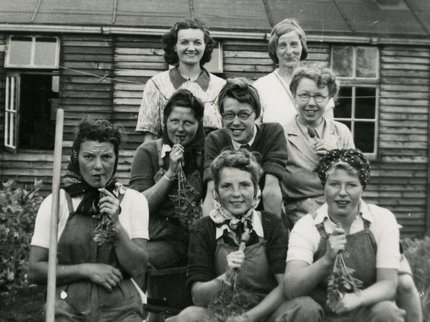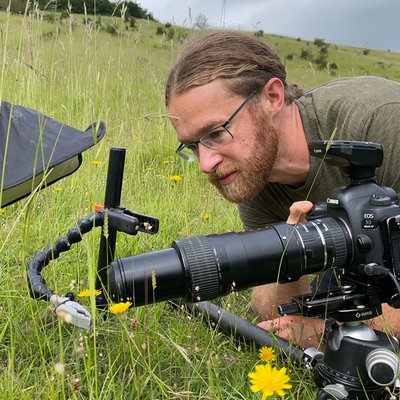
Heritage
WW2: Home Front in Nottinghamshire
The experience of life, particularly the Home Front, during the Second World War, continues to fasc…
Our new library catalogue is live!
Log in now
to browse, reserve and renew, or
visit our library service updates
for the latest news and tips.

Sherwood Forest Up Close is a fascinating insight into the smaller, often hidden species that are essential to the complex ecosystem of the Sherwood Forest landscape.
The Miner2Major project has commissioned natural history photographer Alex Hyde to visit sites across the Sherwood Forest area to open our eyes to the wonder of these species.
A selection of his photographs from these visits have been used to create the exhibition.
Sherwood Forest was historically a medieval royal hunting forest and famously the home of the legendary outlaw Robin Hood.
Over the centuries the natural landscape has changed significantly: reduced and fragmented by the impact of people, industry, the two world wars and the expansion of villages and towns.
What remains forms a mosaic of ancient woodland, heathlands, acidic grasslands, river corridors, lakes and farmland that is home to several thousand species of wildlife, big and small.
The combined efforts of local nature conservation groups, species specialists, volunteers, local authorities and wildlife charities help to protect these remaining natural habitats and the valuable wildlife they support.
You can play your part too. Be a friend to nature; create nature-friendly spaces at home, in your community, at school and at your workplace and tell others; sign up to be a nature conservation volunteer; become a member of a wildlife charity and help to support and promote their work. Every little action counts.

Alex Hyde - Natural History Photographer
“I first developed an interest in photography as a means of getting closer to the natural world. When composing a scene of an insect or spider through my macro lens, I am always struck with a sense of discovery.
To this day I delight in revealing tiny details of subjects that would be missed by the naked eye. Many of my pictures involve photographing moving subjects smaller than a grain of rice, requiring highly specialised equipment and a fair measure of patience.
Nature provides me with an endless array of fascinating subjects and I am confident that I will never tire of photographing them.”
Alex has won the Hidden Britain category in both the 2015 and 2017 British Wildlife Photography Awards.As part of Inspire Poetry Festival 2023, poet Sian Tower led a poetry workshop inspired by the exhibition of nature photography by Alex Hyde which was on show in the library gallery at the time. View the results in this specially created flipbook featuring original poems alongside the images which inspired them.

Sherwood Forest – A Historic Landscape
The name 'Sherwood' was first recorded in 958AD when it was called Sciryuda, meaning 'the woodland belonging to the
shire'.Sherwood became a Royal hunting forest after the Norman invasion of 1066 and was popular with many Norman kings, particularly King John and Edward I.
'Forest' was a legal term and meant an area subject to special Royal laws designed to protect the valuable resources of timber and game (Vert and Venison) within its boundaries.
These laws were strictly and severely imposed by agisters, foresters, verderers (wardens) and rangers, who were all were employed by the Crown.
In the 1200s, popularly thought to be the time of Robin Hood, Sherwood covered about 100,000 acres, which was a fifth of the entire county of Nottinghamshire.
Medieval Sherwood was not - as many imagine - a continuous area of dense forest. It comprised birch and oak woodland, interspersed with large areas of open sandy heath and rough grassland. Sherwood also contained three Royal deer parks, near Nottingham Castle, Bestwood and Pittance (Clipstone)
Park.Medieval woodland was by no means wild. It was a productive resource that was carefully managed. Landowners got the most value from their woodland by using techniques such as 'coppicing' and 'pollarding' to produce poles and laths for building.
'Underwood' (twigs, brushwood etc) was collected and sold for domestic fuel, and the woodland supported several industries, such as charcoal burning and the stripping of oak bark to use in tanning leather. The autumn crop of acorns produced in oak woodland was used to feed pigs and cattle, and sheep and deer were grazed on 'wood pasture'.


The work is commissioned by the Miner2Major Landscape Partnership Scheme supported by the National Lottery Heritage Fund.
Miner2Major is a Landscape Partnership supported by the National Lottery Heritage Fund celebrating the important habitats, special species and rich heritage of Sherwood Forest.
There are currently no events in this series